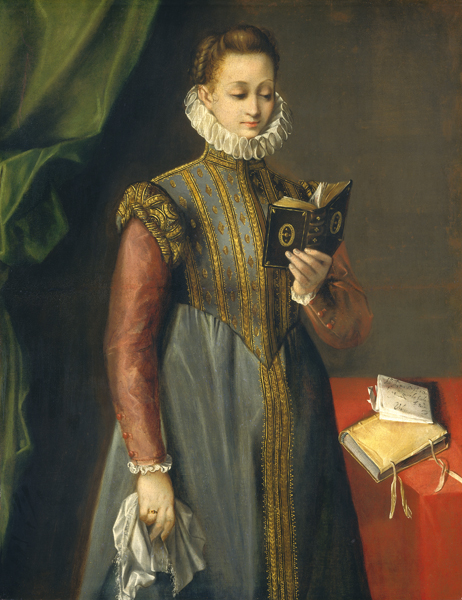
Federico Barocci
Quintilia Fischieri, probably c. 1600
Oil on canvas, 123.8 x 95.3 cm (48 3/4 x 37 1/2 in.)
National Gallery of Art, Washington, DC, Samuel H. Kress Collection
Image courtesy of the Board of Trustees, National Gallery of Art
“When evening comes, I return home and go into my study. On the threshold I strip off my muddy, sweaty workday clothes, and put on the robes of court and palace, and in this graver dress I enter the antique courts of the ancients and am welcomed by them. . . . And for the space of four hours . . . I pass into their world.”1 These words by Niccolò Machiavelli (1469–1527) capture the devotion to the life of the mind that epitomized Renaissance humanism. This unit explores that world.